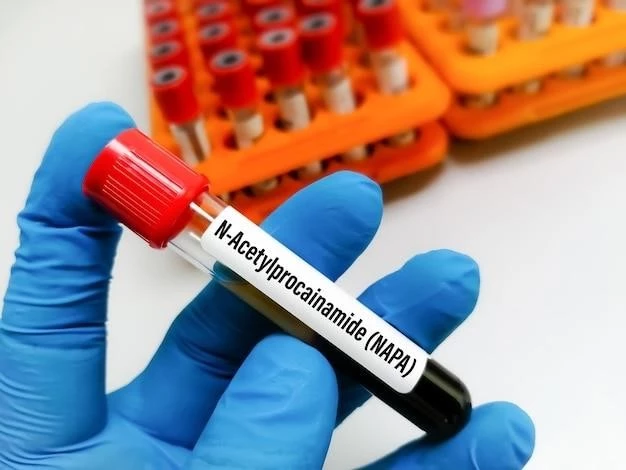Article Plan⁚ Disease ౼ Thalassemia
Introduction to Thalassemia
Thalassemia is an inherited blood disorder that affects the production of hemoglobin, a key protein in red blood cells. Individuals with thalassemia may experience symptoms ranging from mild anemia to more severe complications requiring regular medical intervention. There are two main types of thalassemia⁚ alpha and beta thalassemia. The severity of the condition depends on the amount of hemoglobin the body can produce. Treatment for thalassemia often involves blood transfusions and iron chelation therapy to manage symptoms and improve quality of life.
Types of Thalassemia
Thalassemia is categorized into two main types⁚ Alpha Thalassemia and Beta Thalassemia. Alpha Thalassemia is caused by missing or damaged genes responsible for producing alpha globin, a crucial component of hemoglobin. On the other hand, Beta Thalassemia results from limitations in the body’s ability to make beta-globin, leading to various forms of the condition such as beta thalassemia major, intermedia, and minor. Understanding the specific type of thalassemia is essential in determining the appropriate treatment approach for individuals affected by this inherited blood disorder.
Alpha Thalassemia
Alpha thalassemia is an inherited blood disorder that affects the production of alpha globin, a crucial component of hemoglobin. This condition occurs when some or all of the genes responsible for producing alpha globin are missing or damaged. There are different types of alpha thalassemia, such as silent carrier, alpha thalassemia minor, HbH disease, and alpha thalassemia major, each with varying degrees of severity. Management of alpha thalassemia typically involves monitoring symptoms, blood transfusions, and other supportive care measures to improve the quality of life for individuals affected by this genetic condition.
Beta Thalassemia
Beta thalassemia is an inherited blood disorder that affects the body’s ability to produce beta-globin, an essential protein for hemoglobin and red blood cell formation. The condition presents in various forms, including beta thalassemia major, intermedia, and minor, each with unique characteristics and severity levels. Individuals with beta thalassemia may experience symptoms of anemia due to the inadequate production of hemoglobin. Treatment for beta thalassemia often involves blood transfusions and iron chelation therapy to manage symptoms and improve overall health outcomes.
Symptoms and Clinical Manifestations
Thalassemia presents with a wide range of symptoms and clinical manifestations, including fatigue, pale skin, slow growth, weak bones, and an enlarged spleen. Individuals with thalassemia may also experience anemia-related symptoms such as shortness of breath and jaundice. Severe forms of thalassemia can lead to complications like impaired growth, bone changes, and iron overload. Understanding and recognizing these symptoms are crucial for early diagnosis and appropriate management of thalassemia.
Diagnosis of Thalassemia
Diagnosing thalassemia involves various tests such as complete blood count (CBC), hemoglobin electrophoresis, and genetic testing to confirm the presence of the disorder. Individuals suspected of having thalassemia may undergo additional tests like iron studies, bone marrow examination, and family genetic history evaluation to determine the type and severity of thalassemia. Early and accurate diagnosis is essential for initiating appropriate treatment and management strategies to improve the quality of life for individuals with thalassemia.
Treatment Options

Management of thalassemia typically involves treatment options such as blood transfusions, iron chelation therapy, and supplemental medications. Blood transfusions are often necessary to replenish red blood cells and hemoglobin levels in individuals with thalassemia. Iron chelation therapy helps reduce iron overload caused by frequent transfusions, which can prevent complications such as organ damage. Additionally, some individuals may benefit from folic acid supplements to support red blood cell production. A multidisciplinary approach involving healthcare professionals specialized in thalassemia care is crucial to tailor treatment plans to individual needs and improve patient outcomes.
Management of Thalassemia
The management of thalassemia involves a multidisciplinary approach that focuses on treatment strategies such as blood transfusions, iron chelation therapy, and potential medication supplements. Blood transfusions are vital for replenishing red blood cells and hemoglobin levels in individuals with thalassemia, while iron chelation therapy helps manage iron overload resulting from regular transfusions. Collaborative efforts between healthcare providers and patients are essential in creating personalized management plans to optimize the quality of life for individuals living with thalassemia.
Complications Associated with Thalassemia
Thalassemia can lead to various complications due to the inadequate production of healthy red blood cells and hemoglobin. Individuals with thalassemia may experience symptoms such as fatigue, pale skin, slow growth, weak bones, and an enlarged spleen. Severe forms of thalassemia can result in bone changes, impaired growth, and iron overload due to the need for frequent blood transfusions and subsequent accumulation of iron in the body. Managing these complications effectively is crucial in enhancing the quality of life for individuals living with thalassemia.
Genetic Basis of Thalassemia
Thalassemia is an inherited blood disorder caused by mutations or deletions in the alpha (HBA1/HBA2) and beta globin (HBB) genes. There are two main types of thalassemia⁚ alpha and beta thalassemia, each associated with specific genetic alterations that affect hemoglobin production. The abnormal genes lead to an imbalance in globin chain synthesis, resulting in insufficient or abnormal hemoglobin, leading to the characteristic symptoms of thalassemia. Understanding the genetic basis of thalassemia is crucial for accurate diagnosis, treatment planning, and genetic counseling for individuals and families affected by this genetic blood disorder.
Thalassemia Awareness and Public Health Initiatives

Thalassemia awareness and public health initiatives play a critical role in educating communities about this inherited blood disorder. Public health campaigns aim to increase knowledge about the genetic basis of thalassemia, its types, symptoms, and available treatment options. By raising awareness, promoting carrier screening, and providing access to genetic counseling, public health initiatives strive to enhance early diagnosis, improve patient outcomes, and reduce the burden of thalassemia on affected individuals and their families. Collaborative efforts between healthcare professionals, advocacy groups, and policymakers are essential to drive effective awareness programs and support public health policies related to thalassemia care.
Research and Advancements in Thalassemia Treatment
Ongoing research and advancements in thalassemia treatment aim to improve outcomes for individuals affected by this inherited blood disorder. Scientists and healthcare professionals are exploring innovative therapies, gene therapy approaches, and stem cell transplantations to address the root cause of thalassemia and potentially provide a cure. Additionally, clinical trials are investigating new drugs and treatment modalities to enhance red blood cell production, reduce iron overload, and mitigate the complications associated with thalassemia. By continually advancing medical knowledge and technologies, researchers strive to enhance the quality of life and prognosis for individuals living with thalassemia.
Conclusion and Future Outlook
In conclusion, thalassemia is an inherited blood disorder that significantly impacts the lives of affected individuals, necessitating lifelong management and care. As advancements in research and treatment continue to evolve, there is hope for improved outcomes and quality of life for individuals with thalassemia. By focusing on early diagnosis, personalized treatment strategies, and ongoing genetic research, the future outlook for individuals living with thalassemia appears promising. Collaboration among healthcare professionals, researchers, policymakers, and advocacy groups will play a crucial role in advancing thalassemia care and enhancing awareness to support affected individuals and their families.
